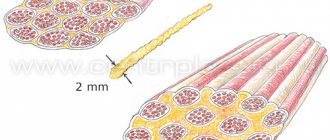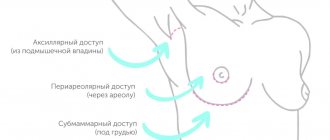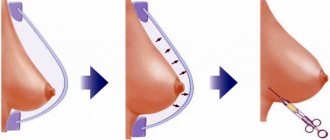First I want to show you one piece of work. Very simple. This is the so-called and widely advertised “implantation without incisions.”
Stage 1. Creating access:
Stage 2. Preparing the hole for the implant:
Stage 3. Implant installation. In this case – Dentsply Astratech:
Stage 4. Installation of the healing abutment:
All. The operation is completed. No seams.
Next - observation and postoperative examinations. Usually few people show this, but for me it is fundamentally important what happens to the patient after the operation and how he feels.
Appearance of the operation area every other day.
Appearance of the operation area after a week:
Everything is fine? It seems like, yes. We wait two and a half months - and begin prosthetics.
View of the implantation area three months after surgery:
All! You can safely start prosthetics! In this clinical situation, this implant serves as one of the supports of a large bridge in the upper jaw.
Friends, why am I showing you all this?
There are two reasons.
The first is that there is no “implantation without incisions.” And in this case there is an incision, only it is not linear, but circular, along the perimeter of the implant socket. So, if some advertisement tells you about “implantation in three minutes without incisions” (as well as “laser implantation”, “vector implantation” or “quantum implantation”, etc. nonsense) - it is, to put it mildly, disingenuous. To put it bluntly, he is lying.
The second reason is that with proper planning and implementation, implant treatment is very low-traumatic, painless and predictable . And the point here is not in the implants used, but, again, I repeat, in the correct planning and implementation of this very treatment.
It would seem, what does Luzhkov have to do with our topic today about pregnancy?
I often receive questions via email like:
– Is it possible to get implants during pregnancy?
– How to plan pregnancy and combine it with implantological treatment?
– How do implants affect the course of pregnancy? And how does pregnancy affect the survival rate of implants?
Let's try to figure this out.
Is it possible to have mammoplasty during breastfeeding and pregnancy?
The answer is no. During this period, the mother’s body undergoes severe hormonal changes, so any surgical intervention is an extremely severe shock for the woman. Many patients decide to enlarge their bust about a year before the expected conception, or six months after the end of the lactation process. At this time, the mammary glands acquire their original shape and beautiful appearance, and they are also not so susceptible to hormonal changes. In this case, the healing process will not be too long.
Is it possible to get implants during pregnancy?
Counter question: can teeth be removed during pregnancy?
Can. For emergency reasons, of course. For example, for acute pain, inflammation, pericoronitis, etc. Sometimes in the first months of pregnancy, planned sanitation is carried out - after all, in the antenatal clinic they require a certificate from the dentist, right?
I don’t entirely agree with sanitation and planned removals, but I don’t strongly object for a number of reasons. Firstly, girls do not always know whether they are pregnant at all. Well, what I mean is that they usually wait for women’s days - and if they are delayed, do tests, etc. And if a girl becomes pregnant somewhere at the beginning of ovulation, then she is generally two or three weeks away from her next period - and at this time she may not even be aware of his situation. And do everything that I did before until I considered myself pregnant. Secondly, the exacerbation of unresolved dental problems in the later stages is much more dangerous - and therefore, having learned about the future addition to the family, expectant mothers try to solve all health problems as early as possible. And this cannot but be welcomed.
Well, about exacerbations and emergency situations... there’s no need to talk about it. Any acute inflammatory process can become even more complicated and lead to serious consequences. And, if exacerbation of chronic periodontitis or pericoronitis in themselves is not very dangerous, then their complications in the form of abscesses, phlegmons, etc. are already really health-threatening troubles. That is why, if acute pain or inflammation associated with teeth occurs, it is necessary to consult a doctor as soon as possible, even during pregnancy. More precisely - especially during pregnancy. And do not engage in self-medication or traditional medicine, do not hope that “everything will go away on its own.”
And so, it’s not for nothing that at the beginning of this post I showed you the implantation operation.
What do you think is more traumatic and dangerous for the patient - such an operation or, say, the removal of a wisdom tooth? In my opinion and from the point of view of my experience, the latter is much more traumatic, more dangerous and requires more attention. In other words, implantation, compared to tooth extraction, is a safer procedure and has less impact on the body.
That is, implantation surgery during pregnancy is quite possible, and at any stage. In theory.
But... if we were talking only about implantation... No, neither control images nor anesthesia affect pregnancy, they can be ignored. However, in the postoperative period we are forced to prescribe complex antibacterial anti-inflammatory therapy - and this is no longer very good for pregnancy. You can try to do without antibiotics - and sometimes this is successful - but the risks of complications are still very high.
Summary: uncomplicated implantation is possible at any stage of pregnancy, but is undesirable due to the need for subsequent drug therapy.
If we were talking about immediate implantation and immediate loading for “emergency” indications, then yes, here the result outweighs the possible risks. For example, a girl was walking, fell, broke a tooth, and it needs to be removed - here the goal justifies the risks: removing the tooth, installing an implant along with a crown in order to restore aesthetics. What's the point of creating an aesthetic problem for a girl and causing stress in her situation?
When can you plan a pregnancy after breast augmentation surgery?
It is better that at least a year passes after mammoplasty, otherwise it will affect the mother’s well-being while carrying the baby. This is necessary so that the female body fully recovers and gains strength and is healthy enough to bear a fetus. If the pregnancy does not occur as planned, the child’s development is normal if you follow the additional recommendations of the plastic surgeon and undergo additional drug treatment. In this case, there is no need to have an abortion.
Breast augmentation for nulliparous women: what to consider
- Installation of the implant does not affect the volume of milk produced, since the endoprosthesis does not come into contact with the glands. The only difficulties that may arise are difficult pumping.
- Nipple transfer is not advisable for those who are planning to become a mother. It is separated from the glandular tissue and nerve endings and transferred to a new location. During the recovery period, the milk ducts may not recover.
- It is also impossible to reduce the breasts and then feed the baby - a large amount of tissue is removed and the ducts are cut. This does not affect pregnancy.
How does pregnancy affect breast shape and size?
Due to hormonal changes in the body, natural sagging of the mammary glands may occur, and when milk appears, it increases in volume.
If a woman has undergone breast enlargement using large round implants, then the risk and degree of breast sagging during pregnancy is much higher. In such cases, very often after childbirth and lactation, subsequent corrective mammoplasty is required, which includes moving and fixing implants. When such a procedure is required, many women choose to have new, best-fitting silicone implants installed.
If the surgeon initially performed the operation so that the implants were well fixed, then their prolapse, especially if they are located axillary, is unlikely even after bearing a child.
What period should separate mammoplasty and pregnancy?
Rehabilitation after augmentation surgery occurs within six months. But this period is not enough for the body to be ready to bear a baby. Both pregnancy and surgery are a serious burden on the body. The more time passes between them, the better. On average, doctors talk about a minimum period of 20 months. The doctor will issue the final summary after a face-to-face consultation.
All questions of interest regarding future motherhood in the light of mammoplasty can be discussed in more detail during an introductory consultation. Registration is made by phone from the Contacts section.
How is breastfeeding after mammoplasty?
Whatever access method is chosen for breast augmentation surgery, it should not cause serious difficulties in the woman’s ability to provide long-term breastfeeding to her infant.
The most complete lactation process is ensured if an axillary implant location is chosen. In this case, the breast tissue is not affected in any way and completely retains its function.
If the areolas are affected during the operation, then it is important to know even before augmentation mammoplasty how the lactation process will proceed. This should be discussed with the surgeon.
In order to avoid the occurrence of mastitis due to the presence of implants, you need to choose the right technique for feeding the newborn and regularly do special massage.
How to plan pregnancy and combine it with implantological treatment?
This question is often heard from patients during consultations.
Typically, implant treatment is very extended and consists of several stages.
The first stage is the implantation operation. We dealt with it above and determined that during pregnancy it is undesirable (with rare, rare exceptions) due to the necessary drug therapy in the postoperative period.
The second stage is the formation of gums. It is often combined with the first stage, implantation surgery (as in the case described at the beginning of the article). This is a simple procedure within the mucous membrane; it does not require subsequent antibiotic therapy.
The third stage is prosthetics. The orthopedic doctor removes the former, fixes the transfer instead, takes impressions, selects and tries on the abutment, fixes and adjusts the crown. These stages are more like assembling a construction set than a treatment, and therefore do not even require anesthesia.
Therefore, the only obstacle to pregnancy is implantation surgery. Because of the drugs. All other stages of drug therapy do not require, so they can be carried out during pregnancy.
Therefore, when it comes to planning a pregnancy, I recommend that my patients go through implantation before it, and all other stages during or after. Well... what else to do on maternity leave, if not teeth?)))
When can you get pregnant after implantation surgery?
Yes, they ask that too. Let me remind you that there is an obstacle – drug therapy. We proceed from this.
Why do you think antibiotics are prescribed, for example, twice a day? Because their concentration in the blood drops below a certain level after 12 hours and must be maintained. Consequently, after 24-36 hours only traces of medications remain in the body, and after 2-3 days there are none left at all.
Antibiotics are not salts of heavy metals; they do not accumulate in the body; they disintegrate and are eliminated quite quickly. Therefore, as soon as they hatch, you can safely engage in sex..., ahem, get pregnant, in general))).
As I already wrote, the remaining stages of treatment no longer require drug therapy.
Summary: it is better to undergo implantation surgery before pregnancy (a few days in advance), the remaining stages - during or after, since they do not require drug therapy.
After childbirth
When making such a responsible decision, it should be taken into account that the breasts will definitely change after childbirth and feeding. It is almost impossible to predict its future appearance. However, experts note that heredity has a strong influence in this matter. Therefore, you can find out in advance from your closest relatives how their mammary glands have changed.
It has been noticed that in the presence of implants in the breast, the shape and size of the mammary glands after childbirth do not change as much as in women who have a completely natural, voluminous bust. But doctors advise not to forget that the condition of this part of the body, after such a difficult period for a woman, largely depends on competent and careful skin care, which will suffer regardless of the presence of implants. The less fluctuations in a woman’s weight, the more carefully she monitors her hormonal levels, the better her breasts will look after childbirth and breastfeeding.
Lactation period
During breastfeeding, implants also have no effect on either the mother’s well-being or the child’s comfort. As well as the quality of the milk itself. A few decades ago, there was an opinion that natural feeding was impossible after breast augmentation. However, today we know that this is not the case. Indeed, it is worth planning breast augmentation at least a year before the expected pregnancy, but only in order to give the body time to fully recover. In this case, no difficulties will arise in the future.
When going to see a doctor, it is worth warning the surgeon about your desire to become a mother in the near future. And although, with any access and method of installing implants, the mammary glands are not functionally affected, the ducts are not disturbed, and the woman will be able to fully feed her own breasts, the doctor can give advice that will help preserve the beautiful shape of the breasts as much as possible and avoid possible problems. As a result, all milk ducts and glands after the healing period will function exactly the same as before the operation. Accordingly, the lactation process will not be disrupted, and possible complications will be reduced to zero.
The exception in this case is extremely large prostheses. Excessively large implants can compress the gland itself and its ducts, interfere with the natural flow of blood and lymph in the tissues, which will negatively affect the breastfeeding process.
Breast augmentation: before and after
Numerous photos of breast augmentation before and after indicate the high achievements of modern plastic surgery. Currently, there are several methods of mammoplasty, as well as different types of implants. This allows patients to choose the shape and size of their breasts.
By studying photographs of breast augmentation before and after, we can confidently speak about the high effectiveness of plastic surgery. The result of the operation is beautiful breasts, which allows you to be proud of your appearance and wear dresses with a deep neckline. In addition, augmentation is the only effective method that can be used to increase breast size for a long time and with a predictable result.
Our examples
It is important to remember that you can evaluate the result of breast augmentation before and after only after the rehabilitation period. At first, you may experience swelling, redness, and other natural consequences of surgery. After tissue restoration and reliable fixation of the implants, the breasts will acquire the desired shape.
Daily life after surgery
After surgery to enlarge and improve the shape of the breast with implants, the doctor usually recommends refraining from active sports for 1.5 months. During this time, initial tissue healing will occur, and you will be able to swim, exercise, etc. lead a full life without restrictions on physical activity.
Modern implants allow you to safely endure flights and even go scuba diving within a few days after operations. In such situations, when the implant is exposed to varying pressure, a slight increase or decrease in its volume may occur and, at the same time, small air bubbles may appear in the chest cavity. Such manifestations disappear on their own within a maximum of 24 hours.
Sunlight and artificial tanning do not have a negative effect on the implant, but can make post-operative scars more noticeable. The sites of former incisions should be protected for a whole year, because under the influence of ultraviolet radiation, the scars can become irreversibly darkened.
A few months after the operation, you are allowed to visit the sauna, bathhouse and swim in the ice hole. The implant is not afraid of temperature effects, but remember that artificial material heats up and cools down more slowly than the human body.
Advantages and disadvantages
The first attempts at breast augmentation were made more than a hundred years ago. During this time, medicine has made great progress, and the number of women wanting to enlarge their bust has increased significantly. This is due to the numerous advantages of this type of mammoplasty. The main ones are:
- Finding your desired breast size. The patient discusses her wishes with the plastic surgeon in advance, after which the optimal size and shape of the implants is selected, taking into account the initial parameters of the mammary glands and chest. As a result, if the requests correspond to reality, the result fully corresponds to expectations.
- Increased self-esteem. Small breast size or irregular shape can cause worries and complexes in a woman. Plastic surgery can correct the situation and restore self-confidence.
- Getting rid of physical disabilities. Breast enlargement can hide various defects caused by trauma, the consequences of operations, congenital asymmetry and other factors. In addition, this operation can be performed simultaneously with a breast lift, which provides a good effect.
- Increased attractiveness. It's no secret that many men like beautiful, large breasts. Augmentation allows for increased attention from the opposite sex and has a positive effect on the patient’s personal life.
Along with numerous advantages, there are also some difficulties that every patient should be prepared for. First of all, it is worth highlighting:
- Long rehabilitation period. Its duration ranges from two to four months. The most important month is the first month, when you need to wear compression garments without taking them off, sleep on your back, avoid physical impact on your breasts and adhere to other doctor’s recommendations.
- Scarring. After breast augmentation, subtle scars remain. Their size and location depend on the access used during the operation. However, there are a number of procedures that can minimize this problem.
- General anesthesia. Surgery and the use of general anesthesia are always stressful for the body.
It is worth noting that most of the disadvantages are temporary and associated with the rehabilitation period. After its completion, the breast does not cause discomfort or difficulties, while the patient is pleased with the achieved result.
Postoperative period and breast care
After the operation, you must constantly wear special compression garments without removing them for a month, plus the compression garments are worn during the daytime for another month. It is recommended to purchase at least two sets to ensure hygiene. In addition, the following recommendations must be followed:
- eliminate physical stress on the shoulder girdle;
- do not make sudden movements and do not raise your arms above the level of the collarbones;
- treat your breasts with care and avoid injury;
- exclude baths, tanning and other thermal effects.
The duration of the rehabilitation period depends on the individual characteristics of the body. Typically, the recovery process takes from two to four months, after which the patient can return to her usual rhythm of life.








